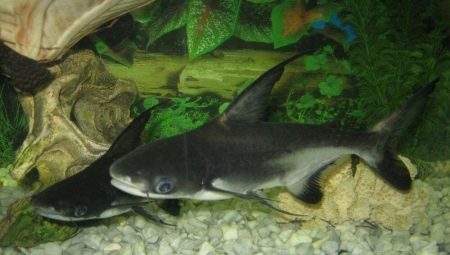You can make a home aquarium truly interesting and unusual by populating exotic fish species in it. Recently, lovers of marine life began to start decorative sharks. Unlike the big sea relatives, she is peaceful, calm and, what is also important, she gets along well with her neighbors. Before you start such pets, you need to learn more about them.
Description
Mini-sharks can safely be called exotic predators. Their habitat is so diverse that individuals of this species are found almost everywhere. While some populate the coastal shallow waters of the seas, others manage to settle deep in the ocean.
These aquarium fish are very similar to their relatives, such as the white or mako shark. Therefore, it is customary to consider domestic inhabitants as a mini-copy of marine giants, with the difference that they do not crave other people's blood.
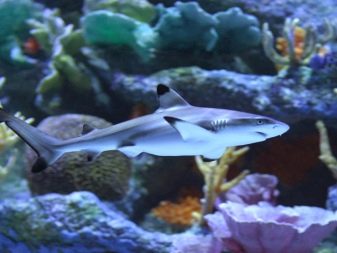

Among the aquarium individuals, there are many species that vary in appearance (size and color), as well as in the conditions of detention.
The body length of decorative sharks varies from 20 cm to 1.5 meters. By the way, such large inhabitants require special water tanks.
Proper maintenance and proper nutrition have a beneficial effect on the general condition of the marine pet, as well as on its life expectancy. Small predators live an average of 20 years.
Among the aquarium sharks, the following colors are most often found:
- white;
- white-gray;
- dark grey;
- saturated black;
- brownish reddish;
- spotted.
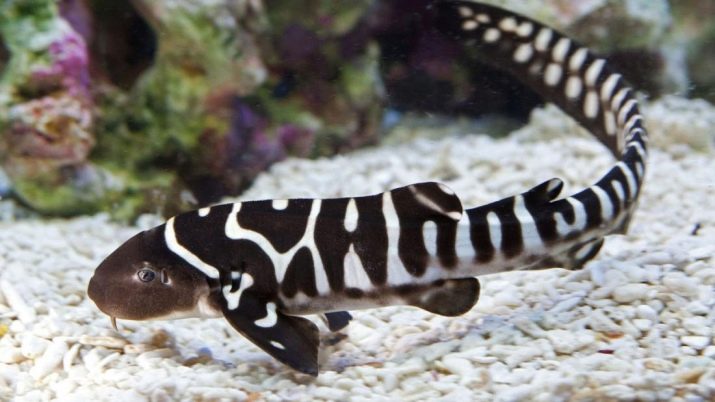
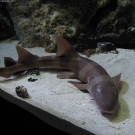
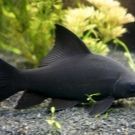

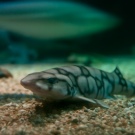
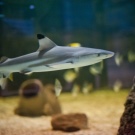
Varieties
Despite the resemblance to large predators, small sharks are peaceful in nature, without harming even the smaller inhabitants of the underwater house.
There are many types of decorative sharks. Here are some of them.
- Black. It is considered the most popular among aquarists. This species is a small copy of the marine predator. The body is completely painted black. However, freshwater fish have a peculiarity - depending on living conditions and nutrition, it changes the color saturation. With proper care, the individual grows to 50 cm. It does not conflict with neighboring fish.
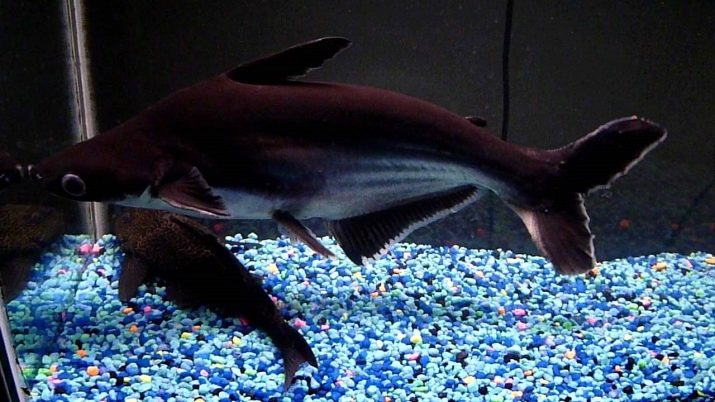
- Dwarf. The smallest representative of aquarium sharks. The size of an adult does not exceed 25 cm. In the wild, prefers the warm waters of the Indian and Pacific Oceans. This species is ovoviviparous. So, for one litter, the female reproduces 6-8 cubs. Cephalopods should be given as food for dwarf sharks. With her sharp teeth, she tears prey into small pieces - just like a real predator. A distinctive feature of the “dwarf" is the presence of luminescent organs (photophores) on its body that glow.
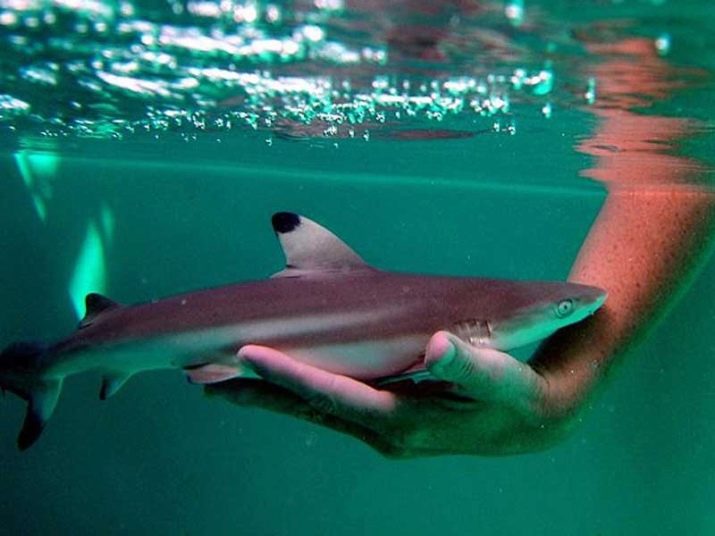
- Blackfin. Its relative is a reef shark with black fins. However, its mini version is a peaceful creature, reaching 15 cm in length (extremely rarely individuals grow to 20 cm). Fish is not fastidious in food; the main thing for it is quantity. Aquarists should be aware that overeating can lead to pet diseases. By the way, it can not be called freshwater. Comfortable habitat - slightly salted water in the aquarium (2 tablespoons per bucket of water is enough).
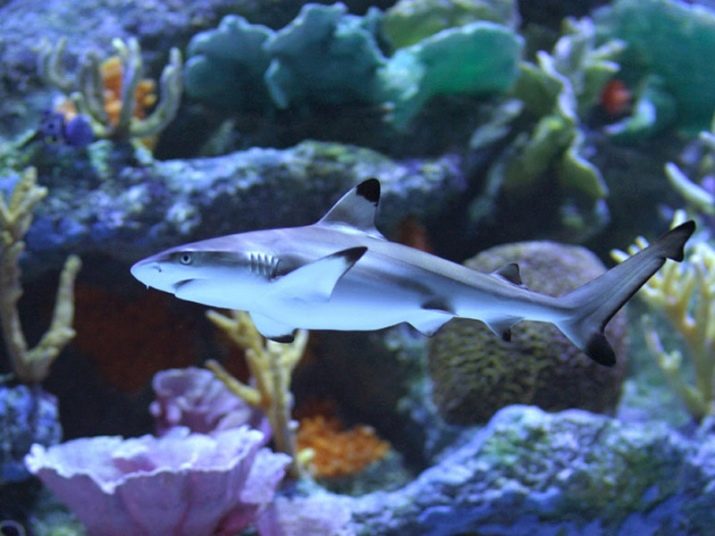
- Black two-tone. Judging by the reviews, she is the most attractive representative of ornamental fish. Her body is covered with velvety skin, it is painted in a rich black color. But all the beauty lies in a bright red tail, which stands out against the black body. The only point that is important to consider before buying such a fish is that it is very aggressive in nature. For this reason, do not add some living creatures to it - most likely, it will end in conflict.
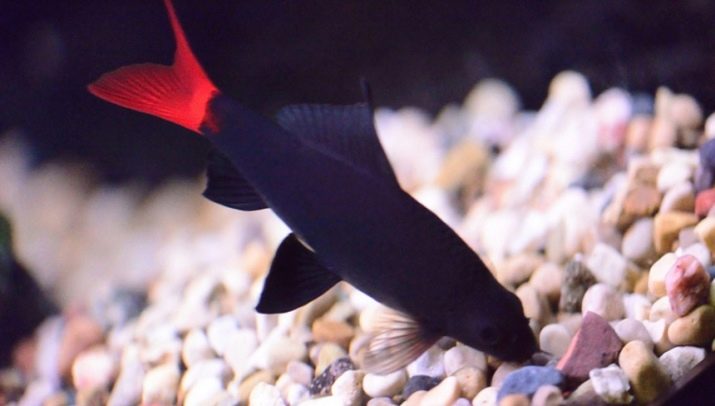
- Pennant. Other names - shark catfish, pennant pangasius. There are similarities with a marine predator. In open waters, individuals reach 1.5 meters in length, while ornamental fish do not exceed 50-60 cm. The diet for feeding shark catfish consists of low-fat fish, frozen squid or granular feed. Interestingly, pangasius is a rather strange fish. Frightened, she pretends to be dead for about 30 minutes, after which she returns to normal. Experts do not recommend small fish to be hooked to the pennant shark - in the hunger period, it is able to eat them.

- Feline. The representative of the Atlantic sharks. An adult rarely reaches 1 meter in length. In this species, the trunk is elongated, the fins are well developed - thanks to this body structure, it quickly develops speed. Since the shape of the head of the fish is similar to the head of a domestic cat, they called it cat. There are two color options - plain dark and spotty. The type of breeding of cat sharks is egg-laying. The female lays 20 eggs at a time. By nature - nocturnal predators.
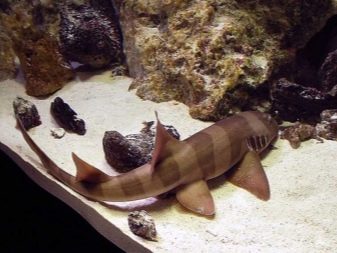
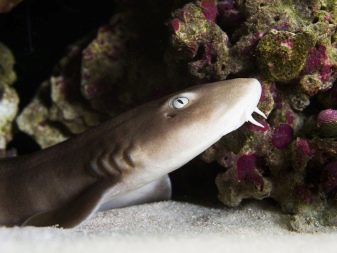
- Prickly. Aquarists rarely choose this species for home breeding, so it is not found on sale. Externally - a standard shark, a thin elongated body, gray color, the skin is covered with small thorns. It grows to 50 cm in length.
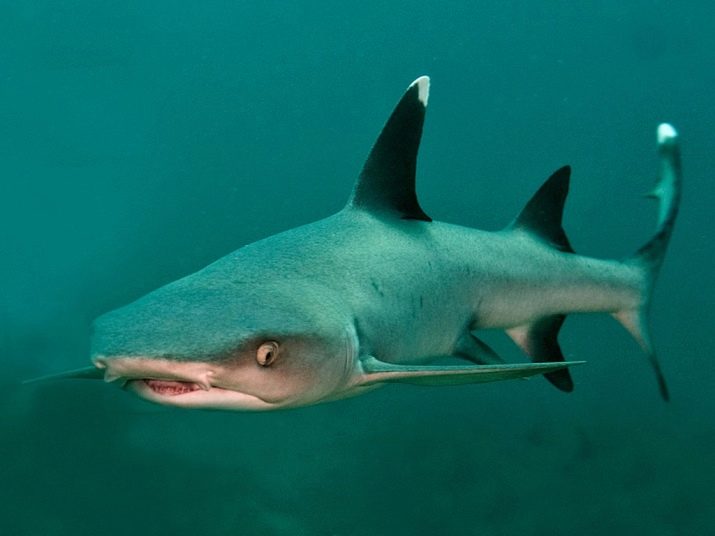
- Horned. Belongs to the family of different teeth. The specimens are quite large - 1.5 meters. A characteristic feature is a large head with growths above the eyes that look like horns. Marine life prefers space, so for breeding this fish it is better to purchase aquariums with a volume of at least 1000 liters.
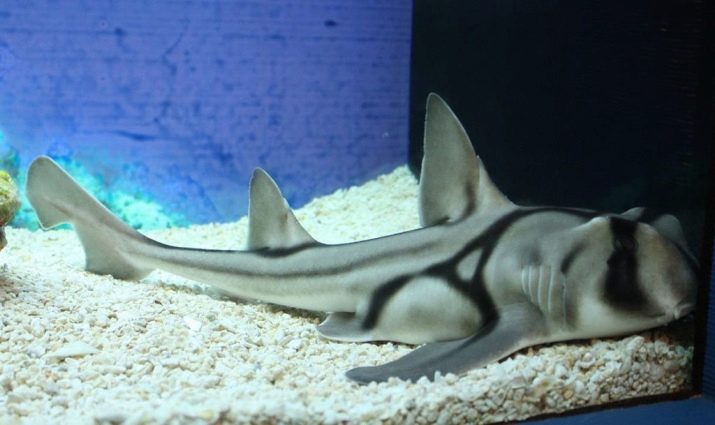
Fish and aquarium selection
If you decide to acquire a miniature predator, it is necessary to approach with particular seriousness the choice of a specific type of shark, as well as to the aquarium in which it will spend its entire life.
Experts made several recommendations:
- for a bottom shark that can breathe lying on the bottom, it is better to choose a square or rectangular aquarium with sharp corners;
- for the pelagic one, an annular tank or with rounded corners is suitable, so that the fish can calmly “wind circles” without braking in front of obstacles;
- the volume of the aquarium depends on the number of individuals - there should be at least 40 liters per fish, in addition, it is necessary to take into account its intensive maturation when it grows in size;
- different types of mini-sharks should not be populated in one underwater house, since each has its own requirements for temperature, salinity, vegetation, and also each has a different way of life and movement.
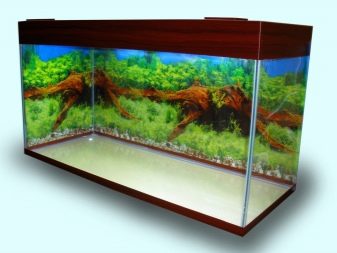

Conditions of detention
Surprisingly, small predators can be perfect pets. The main thing is to provide them with the closest possible natural living conditions, not to ignore the needs and, of course, to feed them.
Consider what decorative sharks need for a comfortable stay:
- the correct temperature regime is from 22 to 29 degrees;
- pH values of water - 6.5-8.0;
- weekly water change - 30% of the total;
- good filtration and aeration with the creation of a strong current;
- bottom grottoes, caves, living vegetation.
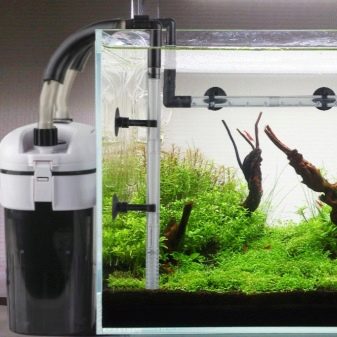
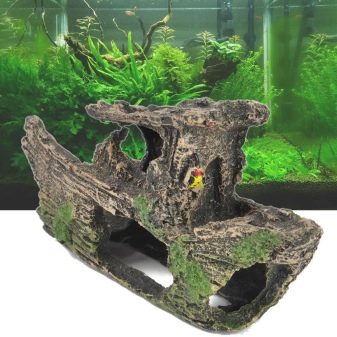
As for feeding, there aren’t much more complicated here. Domestic sharks are omnivores. It is important that they have plenty of protein and carbohydrates in their food. It is recommended to feed the fish 2-3 times a day.
It is better if the daily diet will consist of live and plant foods at the same time.
Pet shops sell special dry food for ornamental fish, including mini-sharks. However, the following components can be included in the menu:
- shrimp meat;
- small insects;
- frozen fish;
- cabbage;
- zucchini;
- grated cucumbers;
- small live fish;
- cereal cereals.
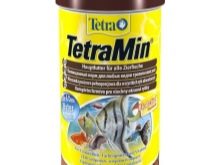
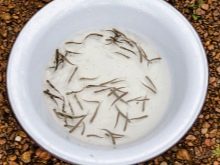
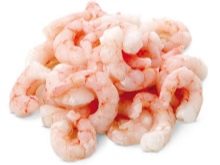
Compatibility
Aquarium sharks are peaceful creatures, so they can easily get along with other inhabitants of the underwater house. The owners of miniature predators should know one rule - the shark should not starve, otherwise its natural instinct will prevail and then the small neighbors will be eaten.
In addition, it is not recommended to breed several different species of this fish in one tank - dissimilar living conditions and characters can negatively affect their health.
The home aquarium with miniature sharks looks unusual, and for the guests it is completely frightening. However, knowledgeable aquarists admire them and are happy to breed them. In order for the fish to live a long life, and the decorative species survive up to 20 years, it is necessary to turn a regular water tank into a small ocean, where the mini-shark will move and feed freely.

In addition, one should not forget about standard procedures - filtration, aeration, cleaning and changing water.
On the proper maintenance of the aquarium shark, see below.
